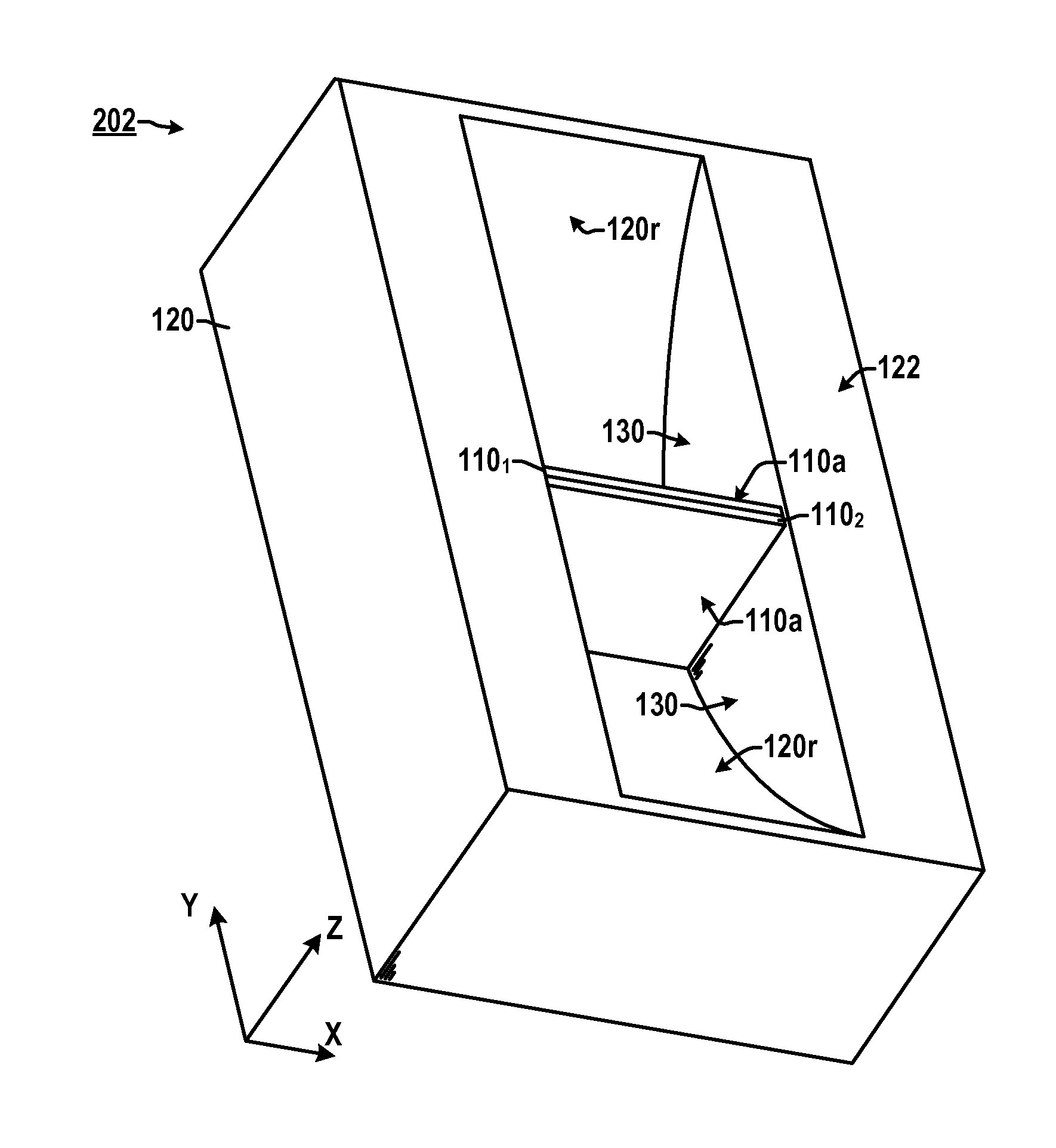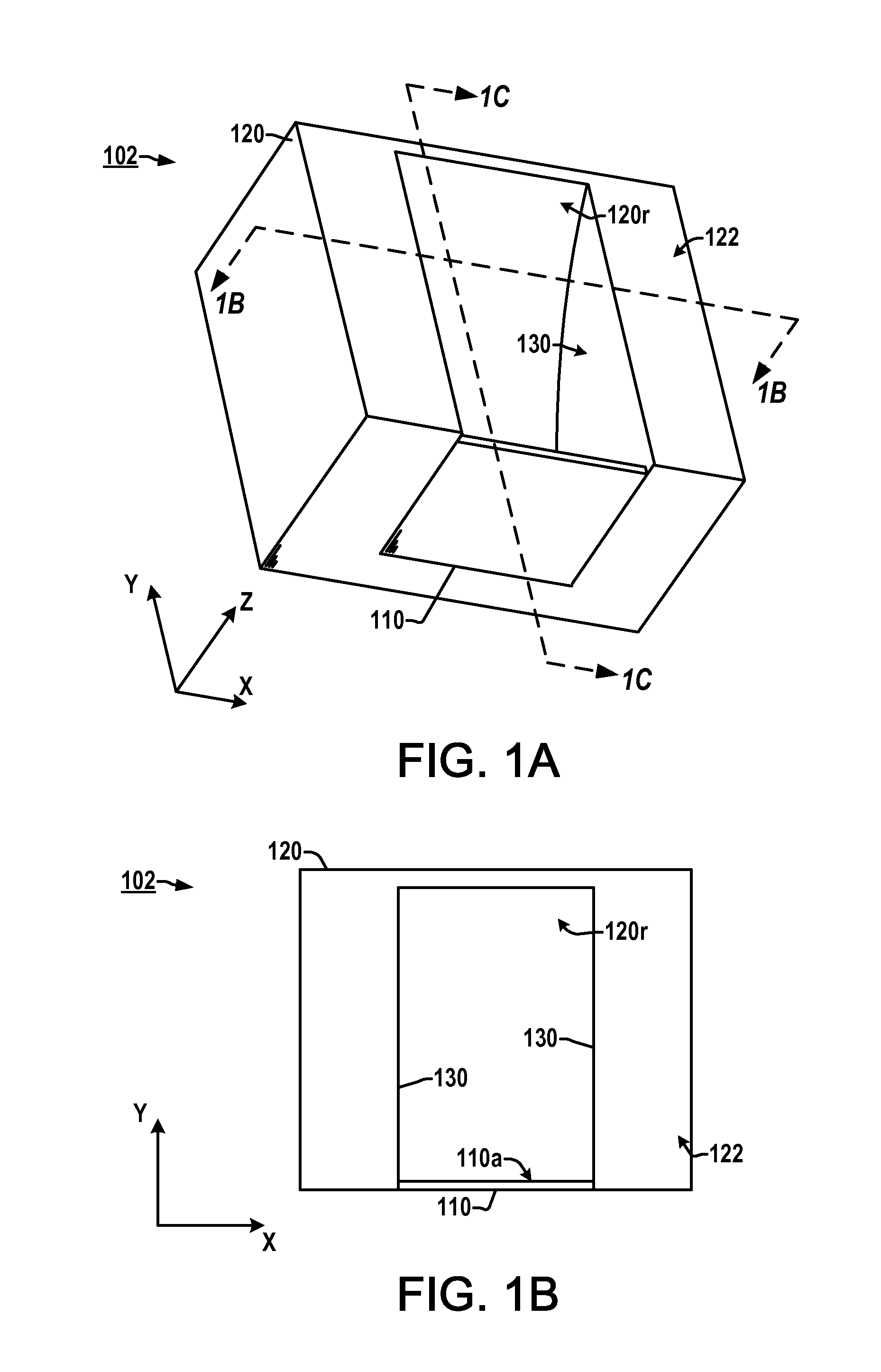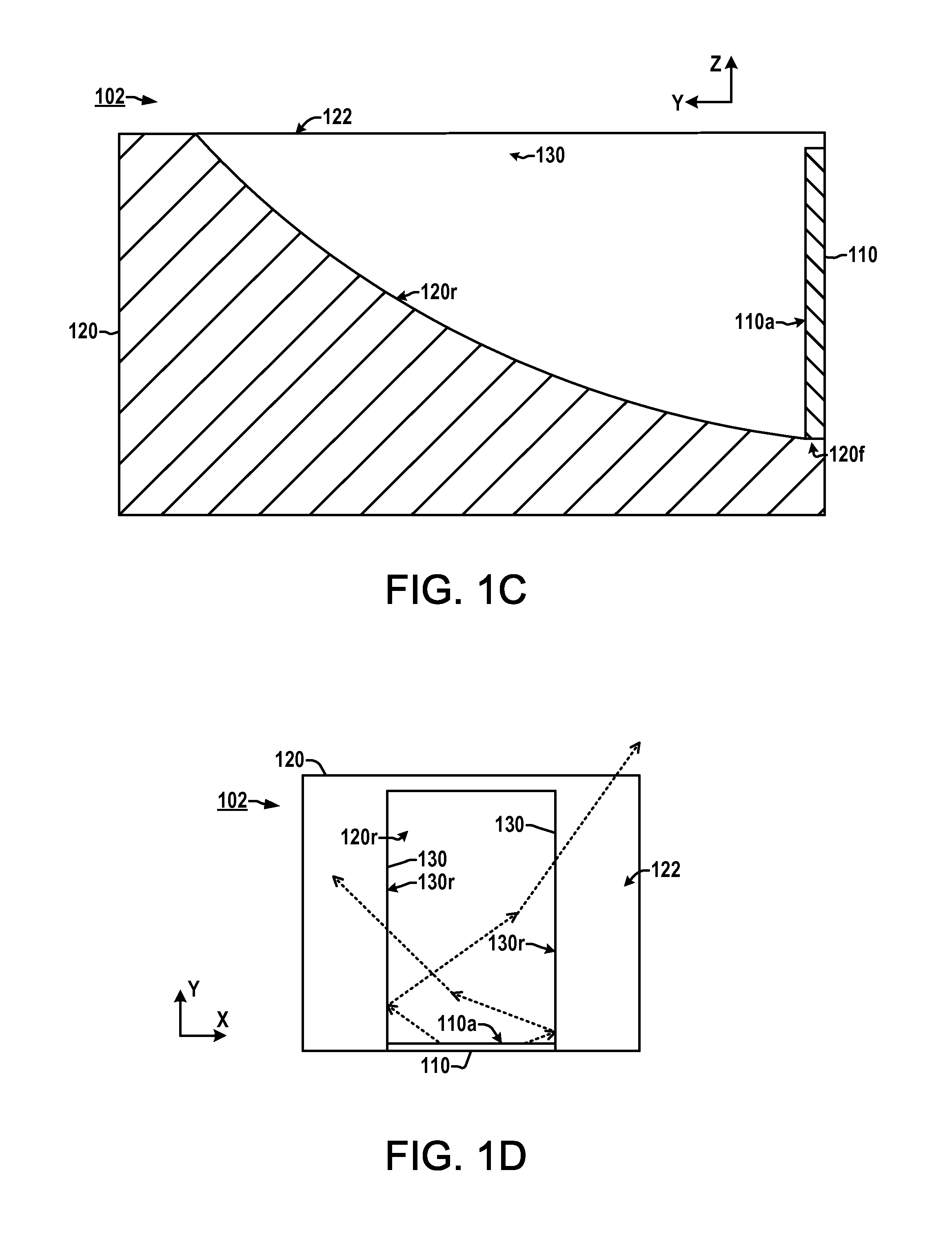Directional Lambertian Optic Illumination Apparatus
- Summary
- Abstract
- Description
- Claims
- Application Information
AI Technical Summary
Benefits of technology
Problems solved by technology
Method used
Image
Examples
Embodiment Construction
[0021]One or more embodiments or implementations are hereinafter described in conjunction with the drawings, where like reference numerals are used to refer to like elements throughout, and where the various features are not necessarily drawn to scale.
[0022]Referring initially to FIGS. 1A-1G, an exemplary directional Lambertian lighting apparatus 102 is illustrated including a Lambertian (or quasi-Lambertian) light source 110 with an emitter side 110a facing at least a portion of a parabolic reflective surface 120r of a reflector structure 120. The apparatus 102 provides Lambertian or quasi-Lambertian output light 150 (FIG. 1E) over an angular dispersion range less than 180 degrees. As best shown in FIGS. 1A-1C, the light source 110 can be any suitable source of Lambertian or substantially Lambertian (quasi-Lambertian) light, such as an LED source, which has at least one emitter side 110a from which Lambertian or quasi-Lambertian light is emitted in operation. In the illustrated emb...
PUM
 Login to View More
Login to View More Abstract
Description
Claims
Application Information
 Login to View More
Login to View More - R&D
- Intellectual Property
- Life Sciences
- Materials
- Tech Scout
- Unparalleled Data Quality
- Higher Quality Content
- 60% Fewer Hallucinations
Browse by: Latest US Patents, China's latest patents, Technical Efficacy Thesaurus, Application Domain, Technology Topic, Popular Technical Reports.
© 2025 PatSnap. All rights reserved.Legal|Privacy policy|Modern Slavery Act Transparency Statement|Sitemap|About US| Contact US: help@patsnap.com



